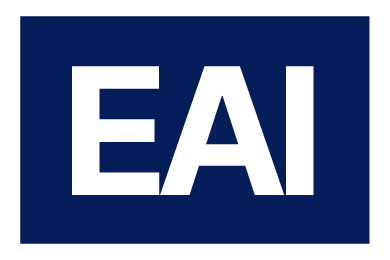
Blogs & Articles
Access our latest insight on how to increase efficiency and drive performance improvement. Stay up-to-date and ensure your business continues to thrive.
Blogs & Articles
Access our latest insight on how to increase efficiency and drive performance improvement. Stay up-to-date and ensure your business continues to thrive.


How can my Business Identify its Competitive Advantage?
As a business owner or operator, it is important to identify and understand what sets your business apart from the competition. This is known as your competitive advantage, and it's a crucial factor in the success of your business. Your competitive advantage could be anything from a unique product or service, to an efficient production process, to a strong brand reputation. Whatever it may be, it's essential to identify and leverage your competitive advantage to stand out in the market and attract customers.
Here are some steps you can take to identify your competitive advantage:
Conduct a SWOT analysis: Identify areas where your business excels and areas where it needs improvement.
A SWOT (Strengths, Weaknesses, Opportunities, Threats) analysis is a strategic planning tool used to evaluate the internal and external factors that can impact a business. It is a way to analyze a company's resources and capabilities, as well as the competitive environment it operates in.
Conducting a SWOT analysis can help a business identify its strengths and weaknesses, as well as the opportunities and threats it faces. By understanding these factors, a business can make informed decisions about its future direction and take steps to address any weaknesses or threats.
To conduct a SWOT analysis, you can start by identifying the internal factors that are strengths or weaknesses for your business. These might include things like your company's financial resources, its reputation, the quality of its products or services, the skills and expertise of its employees, and its operational efficiency.
Next, consider the external factors that could be opportunities or threats for your business. These might include trends in your industry, the competitive landscape, technological advances, changes in consumer behavior or market demand.
Once you have identified these factors, you can use them to develop a plan for addressing any weaknesses or threats, and to take advantage of any opportunities. This could involve making changes to your business model, investing in new technology or training for your employees, or expanding into new markets.
Overall, a SWOT analysis is a valuable tool for helping businesses to understand their current situation and make informed decisions about their future direction.
Research your competitors: Look at what your competitors are offering and how they are positioning themselves in the market.
Conducting research on your competitors can provide valuable insights into the market you operate in and help you understand how your business compares to others in the industry.
There are several ways you can research your competitors, including:
Analyzing their websites and social media presence: When analyzing their websites, pay attention to the types of products or services they offer and how they are presented to visitors. Look at the layout of the site, the language used, and any calls to action. Consider what information is provided about the products or services, such as pricing, features, and benefits. Overall, analyzing your competitors' websites and social media presence can provide valuable insights into their business and help you understand how they are positioning themselves in the market. This can help you to develop strategies for positioning your own business effectively and differentiating yourself from the competition.
Reviewing their online reviews and ratings: This can provide valuable insights into the customer experience and overall reputation of your competitors' products or services. When looking at online reviews, pay attention to common themes that emerge. For example, are customers consistently mentioning the same issues or praising particular features of the product or service? This can give you a sense of the strengths and weaknesses of your competitors' offerings. Overall, helping you to understand how your business compares and identify areas where you may have an advantage or disadvantage.
Assessing the cost of competitors’ products or services: It can be helpful to compare the prices of your products or services to those of your competitors. This can give you an idea of how your pricing strategy compares to theirs and help you determine whether you are competitive in the market. When comparing pricing, consider the price points of your competitors' products or services as well as any promotions or discounts they may be offering. Look at how they present their pricing to customers, such as whether they use a tiered pricing model or offer discounts for bulk purchases. Comparing your pricing to that of your competitors can help you to understand the competitive landscape and determine whether your pricing strategy is effective.
Looking at their marketing efforts: By looking at your competitors' marketing efforts, you can gain valuable insights into how they are positioning themselves in the market and identify any unique or effective strategies they are using. This can help you to develop your own marketing strategy and differentiate your business from the competition.
By conducting this research, you can get a better understanding of the competitive landscape and identify any areas where your business has an advantage or disadvantage compared to your competitors. This can help you to develop strategies for positioning your business in the market and differentiating yourself from the competition.
Look at your unique selling proposition (USP): Your unique selling proposition (USP) is a key aspect of your business that sets it apart from competitors and helps you stand out in the market.
It is the unique benefit or value that your business offers to customers that they cannot find elsewhere. There are many ways to identify your USP. One approach is to consider what makes your business different from your competitors. This could be a specific product feature or service that you offer, or it could be a unique aspect of your business model or approach to serving customers. For example, a USP could be a product feature such as a longer warranty period or a higher level of customer service, such as faster delivery or more personalized support.
It's important to note that your USP should be based on the needs and preferences of your target market. It should be something that customers in your target market value and are willing to pay for. Once you have identified your USP, it's important to communicate it to potential customers in a clear and compelling way. This can help you attract and retain customers and build a strong, successful business.
Consider your target audience: Who is your business targeting? What are their needs and preferences?
This refers to the specific group of people that you are trying to reach with your products or services. This could be defined by demographics such as age, gender, income level, geographic location, or other factors. What are their needs and preferences? Once you have identified your target audience, it's important to understand what they need and what they value. This includes both functional needs (e.g., a reliable car for commuting to work) and emotional needs (e.g., a sense of community or belonging).
By understanding your target audience, you can tailor your products and services to meet their specific needs and stand out in the market. This can involve customizing your offerings to fit the preferences of your target audience, or developing new products and services that address their needs in a unique way.
For example, if your target audience is young, tech-savvy professionals, you might offer mobile apps or online tools that make it easy for them to access your products or services on the go. Alternatively, if your target audience is families with young children, you might offer kid-friendly options or flexible scheduling to accommodate their busy schedules.
By understanding your target audience and tailoring your products and services to meet their needs, you can differentiate your business from competitors and establish a strong position in the market.
Focus on your strengths: Once you have identified your strengths and what sets your business apart, focus on leveraging these assets to your advantage.
Focusing on your strengths is an important aspect of running a successful business. Here are a few ways you can leverage your strengths to your advantage:
Marketing efforts: By highlighting your unique value proposition and the strengths of your business, you can attract customers who are looking for the specific products or services that you offer. For example, if you have a strong track record of excellent customer service, you could showcase this in your marketing efforts to attract customers who value this quality.
Develop new products or services: Another way to leverage your strengths is to develop new products or services that capitalize on your existing expertise. For example, if you have a strong understanding of a particular industry, you could develop a product or service that meets a specific need within that industry.
Build partnerships: Partnering with other businesses that complement your strengths can also be a powerful way to leverage your assets. For example, if you have a strong online presence but lack a physical retail location, you could partner with a brick-and-mortar store to reach a wider audience.
Summary
In summary, identifying your competitive advantage involves analyzing your business, researching the market, and focusing on what makes your business unique. By doing so, you can effectively position your business in the market and attract customers who are looking for the value that you offer.
Why is it important to identify your competitive advantage?
Differentiation: In a crowded market, it can be difficult to stand out from the competition. By identifying your competitive advantage, you can differentiate your business and offer something that sets you apart from your competitors. This can help you attract customers who are looking for something specific that only your business can offer.
Competitive edge: Your competitive advantage gives you an edge over your competitors and can help you win business. For example, if you have a unique product or service that meets a specific need, customers will be more likely to choose your business over your competitors.
Customer loyalty: Identifying your competitive advantage can help you build customer loyalty by offering value that meets their needs and expectations. This can help you retain customers and generate repeat business.
Business growth: Leveraging your competitive advantage can help you grow your business by attracting new customers and expanding into new markets.
Overall, identifying your competitive advantage is essential for the success of your business. It allows you to stand out in the market, attract customers, and drive business growth.
Website Copyright 2024, EAI Solutions. All Rights Reserved.


